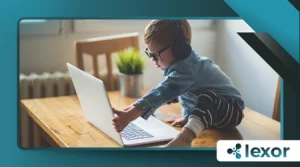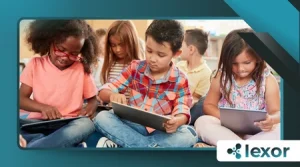How to Use Tablets in Preschool Learning

The question of how to use tablets in preschool learning is more pressing than ever as digital tools become ubiquitous in classrooms.
While skeptics warn of overexposure, a 2025 report by the National Association for the Education of Young Children (NAEYC) reveals that 68% of early childhood educators now incorporate tablets into their lessons up from 52% in 2022.
This shift reflects a growing recognition that, when used strategically, technology can complement traditional pedagogy rather than undermine it.
But how do we ensure tablets enhance learning rather than distract from it? The answer lies in intentional design selecting apps that encourage active participation, setting clear time limits, and blending digital experiences with real-world exploration.
Unlike passive screen time, which can hinder language development, interactive tablet activities that require problem-solving, storytelling, or creative expression have been shown to boost cognitive flexibility.
The challenge for parents and educators is not to resist technology but to harness it wisely.
Imagine a tablet as a digital paintbrush: in the wrong hands, it’s just another distraction, but in the right context, it can unlock creativity and deeper understanding.
The Strategic Role of Tablets in Early Childhood Development
Tablets, when curated thoughtfully, can serve as powerful tools for foundational skills. Literacy apps like Homer adapt to a child’s reading level, offering personalized phonics exercises that feel more like games than drills.
Meanwhile, math platforms such as Moose Math turn number recognition into an interactive adventure, reinforcing concepts through playful repetition.
Research from Stanford University’s Graduate School of Education (2024) found that preschoolers using such adaptive apps improved their early math skills by 31% compared to peers relying solely on traditional methods.
Yet, technology alone isn’t the solution it’s the bridge between abstract concepts and tangible understanding.
For example, after a child completes a shape-matching game on a tablet, a teacher might reinforce the lesson with physical blocks, asking, “Can you build the same tower you just saw on the screen?” This dual approach strengthens neural connections by merging visual and tactile learning.
Social-emotional development also benefits from well-designed apps. Tools like PBS Kids’ Daniel Tiger’s Neighborhood use storytelling to teach empathy and emotional regulation.
++How to Use a Crypto Wallet Safely and Effectively
When children watch Daniel navigate frustration, then discuss their own feelings with a teacher, they’re not just consuming contentthey’re applying it.
Optimizing Engagement Without Overdependence
The line between productive use and overreliance is thin. A 2024 study from the University of Washington found that children who spent more than 60 minutes daily on unstructured tablet use showed shorter attention spans during non-screen activities.
However, those with guided, limited exposure (20–30 minutes of high-quality apps) demonstrated improved focus and problem-solving abilities. The difference? Purpose.
Consider a preschool in Austin, Texas, where teachers use tablets for “digital scavenger hunts.” Children photograph objects that start with a specific letter, then collaborate to create a digital collage.
This activity merges technology with movement, language, and teamwork proving that screens can foster interaction rather than isolation.
++Top Benefits of Smart Home Automation You Should Know
Parental involvement is equally critical. Instead of handing a child a tablet for solo play, caregivers can co-explore apps, asking open-ended questions like, “Why do you think the character made that choice?”
This transforms passive consumption into an active dialogue, reinforcing comprehension and critical thinking.

Addressing Equity and Accessibility in Digital Learning
Not all preschoolers have equal access to technology, creating a “digital divide” that risks widening educational gaps.
While affluent schools often have tablets in every classroom, underfunded programs may rely on shared devices or none at all.
The U.S. Department of Education’s 2025 EdTech Initiative reports that only 40% of low-income preschools have one-to-one device access, compared to 75% in higher-income districts.
Nonprofits like Too Small to Fail are working to close this gap by donating tablets preloaded with educational apps to Title I schools.
Meanwhile, some libraries now offer “tech backpacks” with loaner devices for families without home access. These efforts are vital, but systemic change requires broader policy shifts such as federal funding for early childhood edtech programs.
Read more: The Role of Virtual Reality in Early Childhood Learnin
Teachers in resource-limited settings are also finding creative workarounds.
In rural Mississippi, one educator uses a single classroom tablet as a “learning station,” where small groups take turns practicing letter sounds while others engage in offline activities.
Other people are also reading: Homework Gap
This rotational model ensures all students benefit from technology without requiring individual devices.
Conclusion: Crafting a Future-Ready Foundation
The conversation about how to use tablets in preschool learning isn’t about choosing between screens and crayons it’s about integrating both to prepare children for a world where digital literacy is as essential as reading.
When used mindfully, tablets can personalize education, spark curiosity, and bridge developmental gaps.
But like any tool, their value depends on how we wield them. Will we let screens pacify children, or will we leverage them to inspire deeper engagement?
The answer lies in balance: pairing technology with human interaction, digital play with physical exploration, and innovation with timeless teaching principles.
As we move forward, the focus must remain on equity, intentionality, and adaptability ensuring every child, regardless of background, can thrive in both the physical and digital realms.
Frequently Asked Questions
How much tablet time is appropriate for preschoolers?
Experts recommend no more than 30–60 minutes per day of high-quality, interactive content, broken into shorter sessions. The key is balancing screen time with physical play and social interaction.
What are the best types of apps for preschool learning?
Look for apps that are ad-free, encourage active participation (e.g., drawing, problem-solving), and align with learning goals (e.g., literacy, math, or social-emotional skills). Examples include Khan Academy Kids and Endless Reader.
Can tablets replace traditional teaching methods?
No. Tablets should supplement—not replace—hands-on learning, social play, and teacher-led instruction. Think of them as enhancers, not substitutes.
How can low-income schools implement tablet learning effectively?
Strategies include shared-device models, grants for edtech funding, and partnerships with nonprofits that provide discounted or free educational technology.
Table: Key Data on Tablet Use in Preschool Education (2025)
| Metric | Findings |
|---|---|
| Percentage of preschools using tablets | 68% (NAEYC, 2025) |
| Optimal daily screen time | 20–30 mins of guided use (U. of Washington, 2024) |
| Math skill improvement with apps | 31% increase vs. traditional methods (Stanford, 2024) |
| Device access gap (low vs. high-income) | 40% vs. 75% (U.S. Dept. of Education, 2025) |
